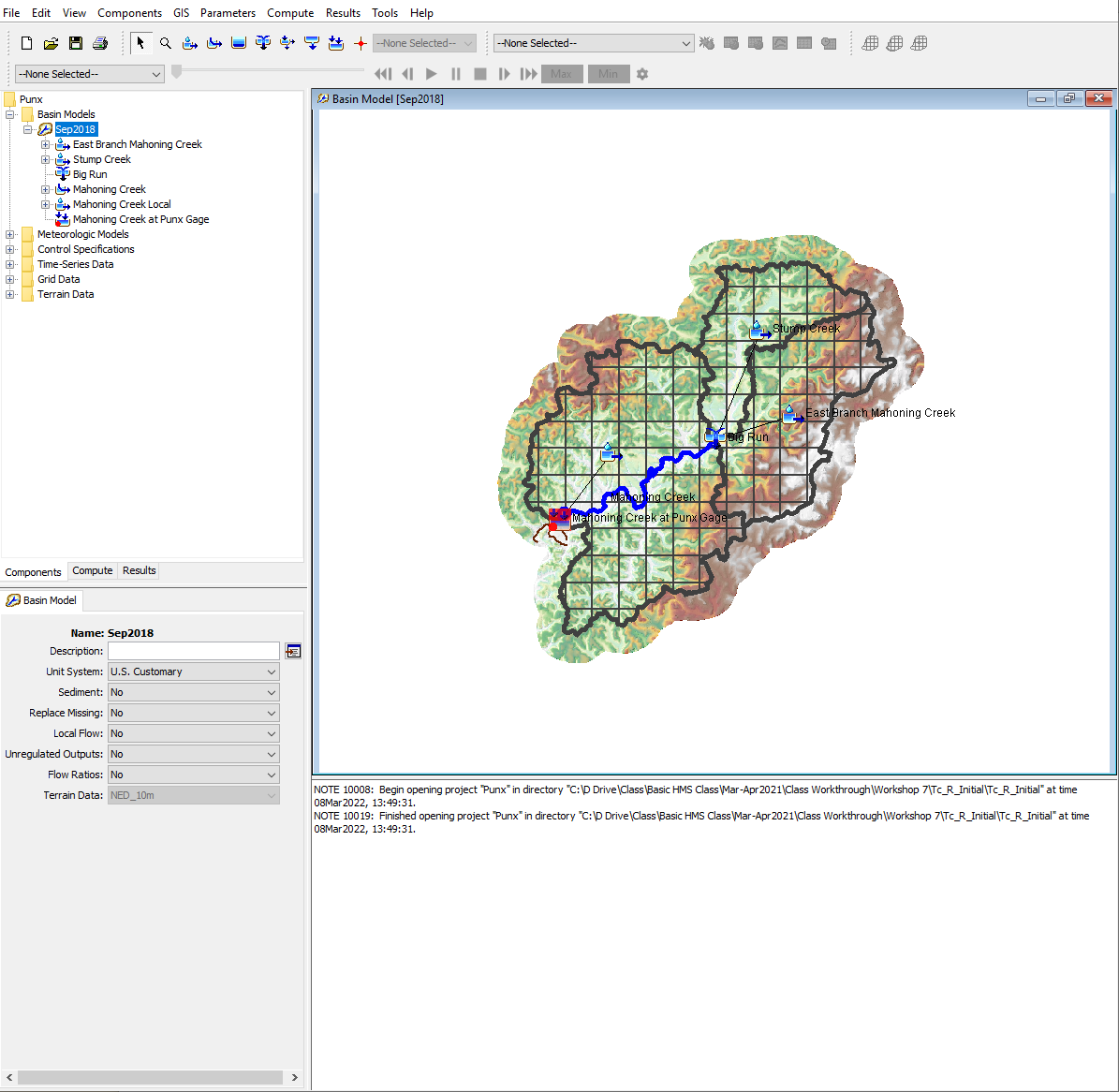Background
The unit hydrograph is a technique for modeling the transformation of excess precipitation to runoff at the watershed scale. When the watershed has both precipitation and flow data available for a storm event, the unit hydrograph relationship can be derived directly. When the watershed is ungaged, the unit hydrograph relationship cannot be derived directly; therefore, many synthetic unit hydrograph methods have been developed to help with ungaged watersheds (though not limited for use to just ungaged watersheds). There are different synthetic unit hydrograph methods available in HEC-HMS, such as the Snyder and SCS Unit Hydrograph Methods, which the user can choose. In this tutorial, the Clark unit hydrograph (UH) method is applied.
Overview
In this tutorial, you will learn one method for estimating the time of concentration (Tc) and storage coefficient (R) for Clark's synthetic unit hydrograph and evaluate the impacts these parameters have on the simulated hydrograph. We will be estimating the Clark Unit Hydrograph parameters for three subbasins in the Punxsutawney watershed. There are various methods available to estimate Tc and R and some of the quickest ways are to use empirically derived equations and/or regional regression equations. Regression equations are developed for regions with specific types of terrain, land use, basin/river slopes, (i.e. rural agricultural land, small mountains, air fields) and watershed sizes (i.e. areas less than 10 square miles). Care must be taken before applying these equations to your study. Equations typically rely on extracting basin characteristics to estimate the Clark Unit Hydrograph parameters. Once the appropriate basin characteristics are extracted, the Tc and R parameters can be quickly calculated.
Supplementary Info
If interested in developing your own Clark Unit Hydrograph parameter estimates for your modeling domain of interest, please see the following paper that outlines how variable Clark unit hydrograph parameter regression equations were developed for the entire state of California: Bartles_Meyersohn_CA_Unit_Hydrograph_Regression_Equations.pdf
Goal
In this workshop you will:
- Estimate Clark's time of concentration (Tc) for three subbasins using regression equation.
- Estimate Clark's storage coefficient (R) for three subbasins.
- Compare the simulation results for the Punxsutawney watershed against observed flow data.
- Change Tc and R and understand their impacts to the simulated hydrograph.
Data
You will be using the Punxsutawney Watershed HEC-HMS model to estimate Tc and R values. All model and parameter components other than the Unit Hydrograph parameters have been configured for you.

Continue to Estimating Time of Concentration & Storage Coefficient